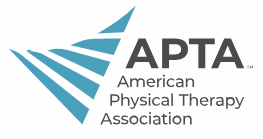APTA Annual Conference Abstracts
PT 2009: The Annual Conference and Exposition of the APTA, June 10 - 13, 2009
Efficacy of Inspiratory Muscle Training in Individuals With Cystic Fibrosis: A Systematic Review (PO-05-RR-TH)
EFFICACY OF INSPIRATORY MUSCLE TRAINING IN INDIVIDUALS WITH CYSTIC FIBROSIS: A SYSTEMATIC REVIEW.
Robert Dekerlegand
*, Jennifer Bohn, Kristi Lupinetti, Angela Mueller, Jacqueline Walford
UMDNJ-SHRP
PURPOSE: The purpose of this systematic review was to analyze the literature to determine the efficacy of inspiratory muscle training (IMT) in improving respiratory muscle function (RMF), exercise capacity, and quality of life (QoL) in individuals with Cystic Fibrosis (CF).
BACKGROUNDS/SIGNIFICANCE: CF is an inherited progressive disorder resulting in an increased volume and viscosity of mucus produced in the airways. The excess mucus leads to chronic bacterial infections and a progressive decline in pulmonary function. As a result, the energy demand placed on the pulmonary system is ultimately increased and may exceed the functional capacity of the respiratory muscles. This imbalance may be exaggerated with activity and result in excessive dyspnea, compromised exercise capacity, altered functional endurance, and a decreased QoL. The pulmonary effects of CF are similar to chronic obstructive pulmonary disease (COPD). Numerous research articles, reviews, and meta-analyses have demonstrated the potential for IMT to enhance respiratory muscle function (RMF), alleviate dyspnea, and enhance QoL in individuals with COPD. The ergogenic effects of IMT are controversial. To date, there are no systematic reviews assessing the potential for IMT specifically in CF. A review of the literature on this topic will enable rehabilitation professionals to make evidence-based decisions when considering this intervention for individuals with CF.
SUBJECTS: Not Applicable
METHODS AND MATERIALS: The literature review was completed between September 2007 and July 2008 using CINHAL (1982 to current), and Medline (1950 to current) databases through the Ovid search engine. Articles included were limited to the English language only. Search strategies focused on research designs that utilized both pediatric and adult subjects with various stages of disease. Experimental and quasi-experimental original research articles utilizing resistive IMT as the primary intervention in individuals with CF were included in the final review. Articles using other forms of breathing exercises were excluded.
ANALYSES: Articles were reviewed and discussed by 5 separate readers. The overall quality of literature was graded using the Oxford Centre for Evidence Based Medicine (OCEBM) Levels of Evidence. Levels of evidence range from 1a (representing high-quality systematic reviews of randomized control trials) to 5 (representing expert opinion).
RESULTS: A total of 5 randomized control trials were included for the final review. The level of evidence for each of these studies is 2b, due to various threats to internal validity. Subjects ranged from 7 - 26.2 years old and included individuals with mild to severe disease. Two studies used flow-based loading and two used threshold loading with intensities ranging from 40 - 80% of maximal inspiratory pressure (MIP). One study used voluntary induced hyperpnea as their mode of IMT at intensity near maximal sustainable ventilation. Duration and frequency of the intervention varied across all studies. All modes of IMT have been shown to significantly improve inspiratory muscle function in individuals with CF across all ages; however the impact on exercise tolerance is unclear. Only two of the five included studies demonstrated an increase in exercise tolerance secondary to their intervention. These improvements were also accompanied by improvements in pulmonary function tests and an increase in respiratory muscle strength. As compared to an upper body exercise program, voluntary induced hyperpnea yielded similar improvements in RMF. Two studies included measures of fatigue and dyspnea, with conflicting results which may be explained by discrepant methodologies.
CONCLUSIONS: IMT appears to be beneficial for individuals with CF. Specific parameters are unclear due to variations in protocols, testing modes, outcome measures, subject characteristics, and monitoring of compliance. Additional studies are needed to make definitive recommendations pertaining to the clinical applicability of IMT in CF. Both flow-based loading and threshold loading appear to be equivocal in enhancing RMF as long as the training load is well controlled. Optimal intensity appears to be in the range of 40 - 60% MIP and the training stimulus should be sufficient to increase inspiratory muscle strength for potential ergogenic effects. These findings are in agreement with the literature in COPD. However, in contrast to the literature in COPD, benefits were seen in individuals with CF in the absence of respiratory muscle weakness as identified as MIP < 60cmH2O. Although these studies suggest the increased RMF led to improvements in pulmonary function and exercise capacity, it is plausible these effects were due to an enhanced pulmonary hygiene instead. Future research is warranted to confirm optimal treatment protocols, specific mechanisms of action, identify individuals who would most likely benefit from this modality, compare IMT to aerobic exercise, and to analyze long-term outcomes of IMT in patients with CF.
FUNDING SOURCE: None.
KEYWORDS: inspiratory muscle training, cystic fibrosis, inspiratory muscle function


